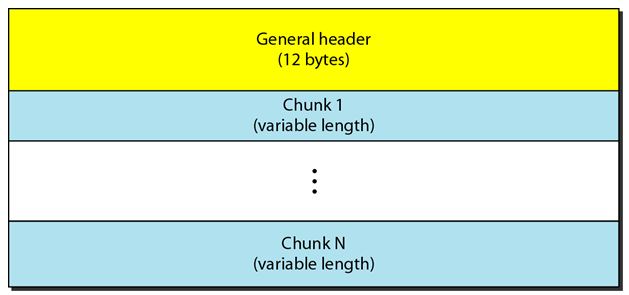Packet Format in SCTP
An SCTP packet has a mandatory general header and a set of blocks called chunks. There are two types of chunks: control chunks and data chunks. A control chunk controls and maintains the association. A data chunk carries user data. In a packet, the control chunks come before the data chunks. The following figure shows the general format of an SCTP packet.

General Header SCTP packet:
The general header (packet header) defines the endpoints of each association to which the packet belongs, guarantees that the packet belongs to a particular association, and preserves the integrity of the contents of the packet including the header itself. The format of the general header is shown in the following figure.
There are four fields in the general header which are as follows:
• Source port address: This is a 16-bit field that defines the port number of the process sending the packet.
• Destination port address: This is a 16-bit field that defines the port number of the process receiving the packet.
• Verification tag: This is a number that matches a packet to an association. This prevents a packet from a previous association from being mistaken as a packet in this association. It serves as an identifier for the association; it is repeated in every packet during the association. There is a separate verification used for each direction in the association.
• Checksum: This 32-bit field contains a CRC-32 checksum. Note that the size of the checksum is increased from 16 (in UDP, TCP, and IP) to 32 bits to allow the use of the CRC-32 checksum.
For Further Reading:
Different Services of SCTP
SCTP Features
SCTP Association
Flow Control in SCTP
Error Control in SCTP
Back to DCN Questions and Answers


